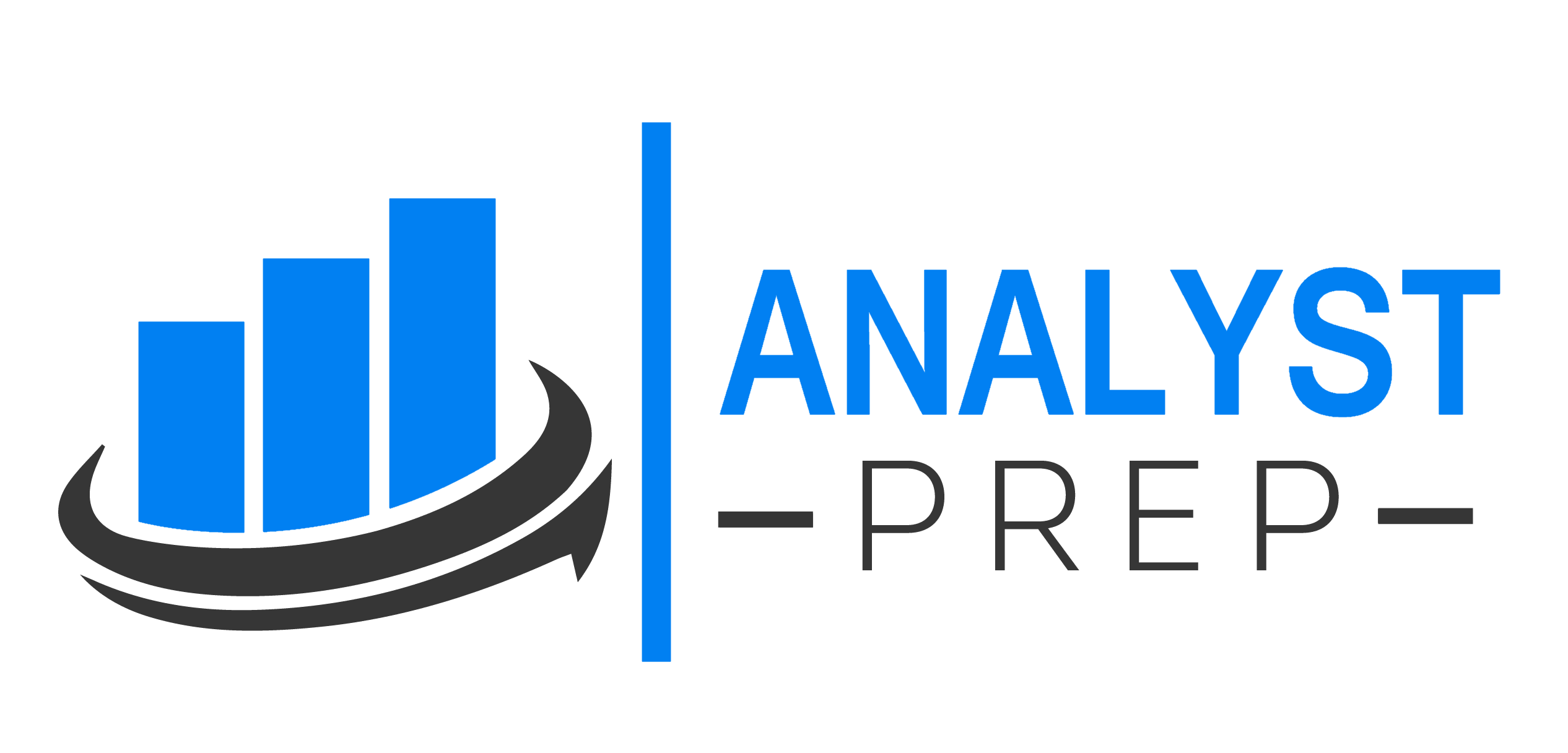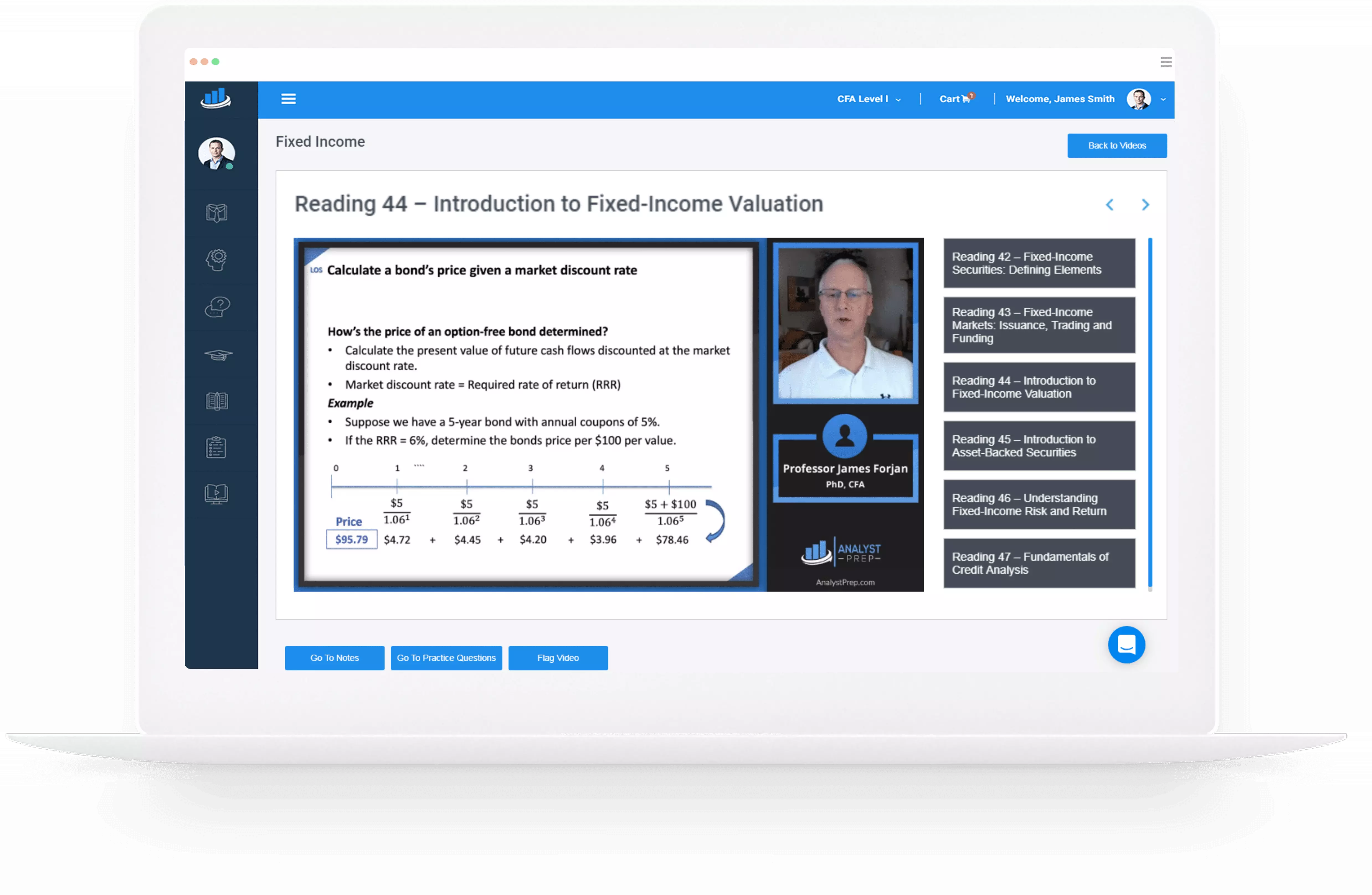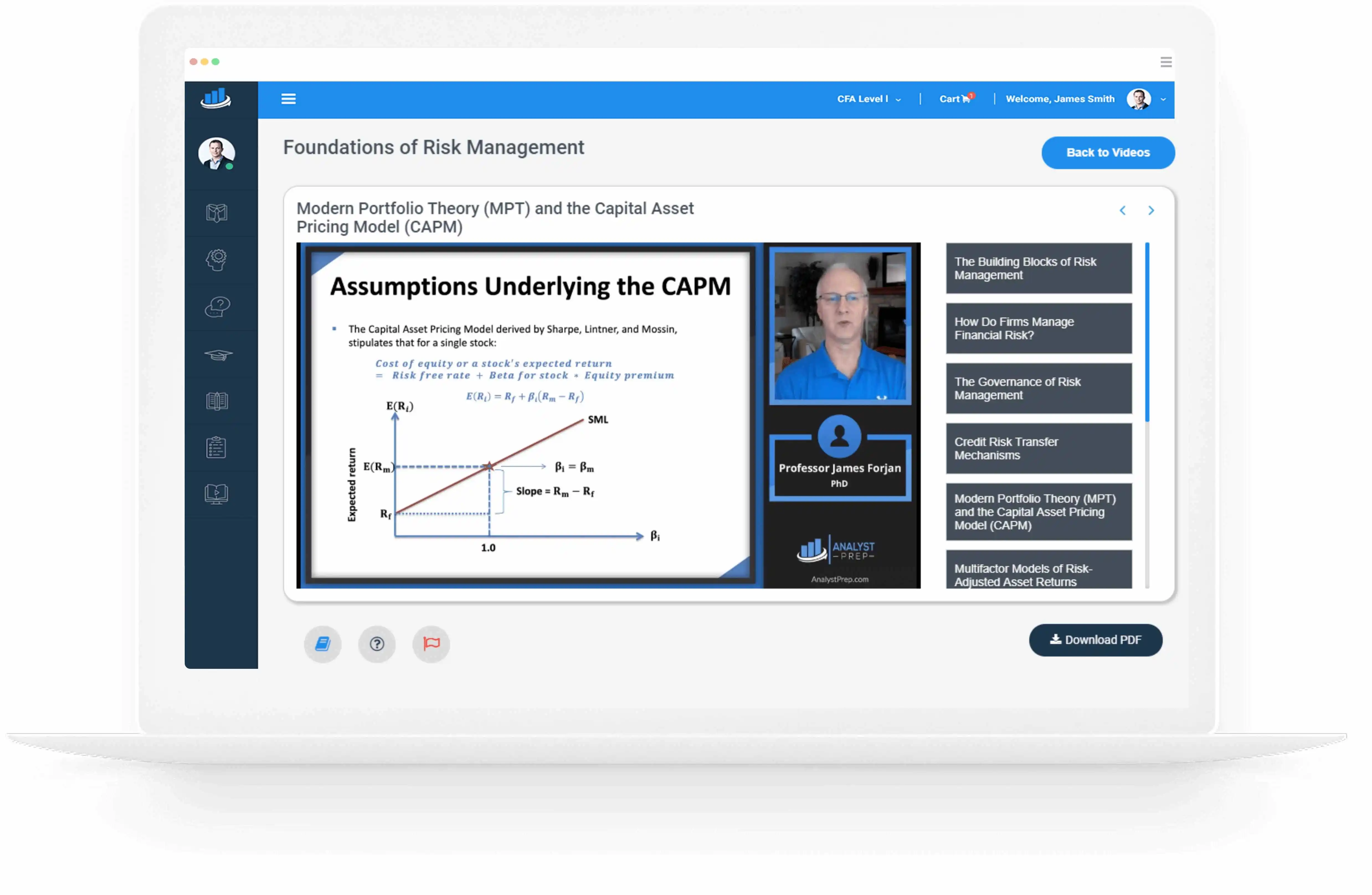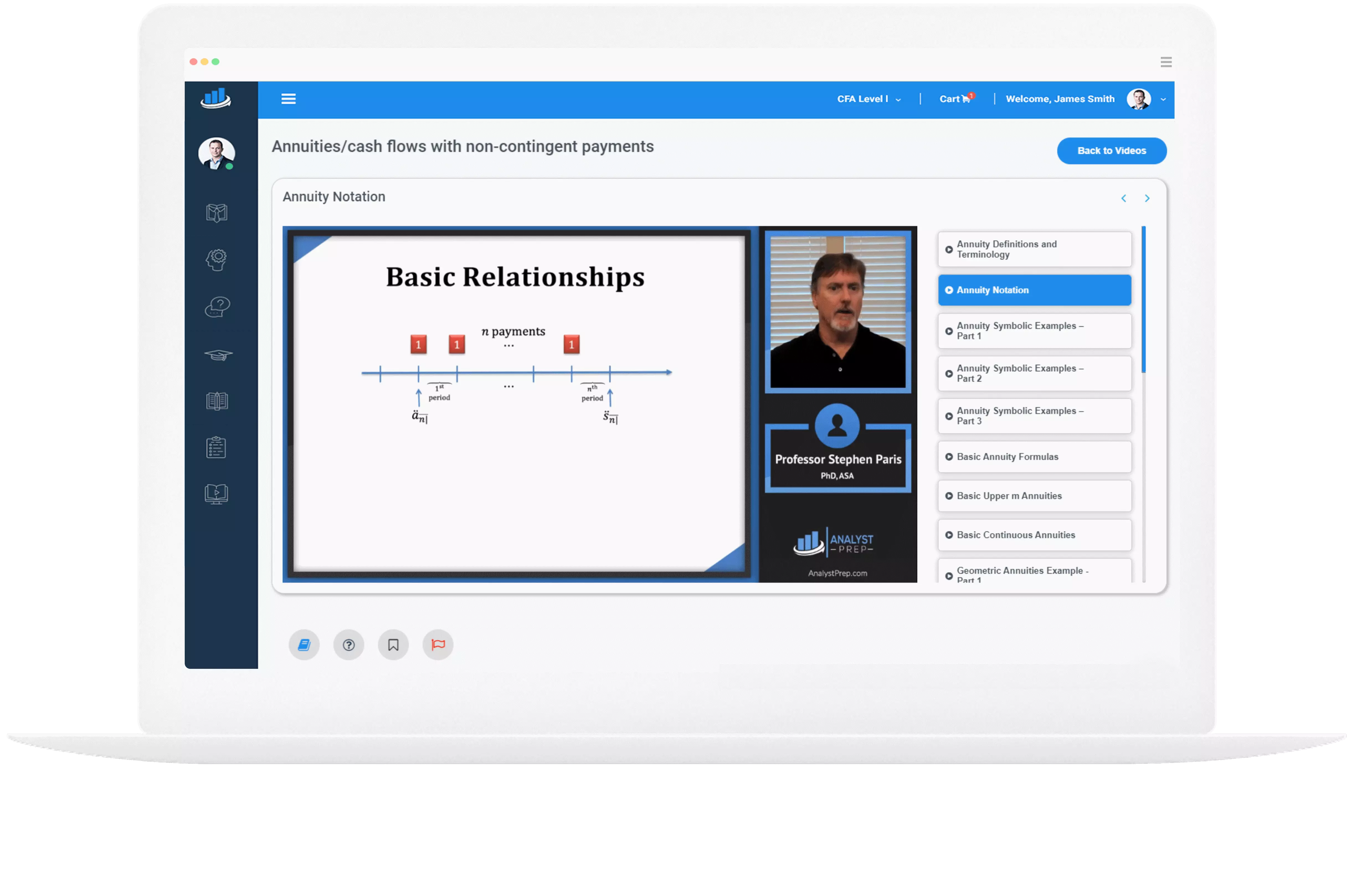Calculating Returns Using CAPM
Given as asset systematic risk, the expected return can be computed using the capital asset pricing model. The CAPM result is usually used as a first estimate of return. In addition, it is used in capital budgeting and the determination…
Applications of CAPM
CAPM can be extended to a number of areas. It provides additional applications beyond the estimation of security returns. A key area is in performance evaluation, where a number of commonly used metrics are employed. Performance Evaluation Various computable performance…
The Investment Policy Statement
[vsw id=”hh4LeaTMl5Q” source=”youtube” width=”611″ height=”344″ autoplay=”no”] Before constructing a client’s portfolio, an advisor should understand the client’s goals, resources, circumstances, and constraints. Portfolio planning is the process of constructing a portfolio to meet a client’s investment objectives. The written document…
Components of the IPS
[vsw id=”hh4LeaTMl5Q” source=”youtube” width=”611″ height=”344″ autoplay=”no”] There is no standard format to the Investment Policy Statement, but most conform to a basic structure. The two key sections are the investment objectives and the investment constraints. Typical IPS Structure The IPS…
Risk and Return Objectives
[vsw id=”hh4LeaTMl5Q” source=”youtube” width=”611″ height=”344″ autoplay=”no”] The investment objectives and investment constraints are arguably the key components of the IPS. The two elements outline the risk and return objectives. Return objectives and expectations must be consistent with the risk objectives…
Financial Risk Tolerance
[vsw id=”hh4LeaTMl5Q” source=”youtube” width=”611″ height=”344″ autoplay=”no”] Financial risk tolerance is made up of two components: the ability to take on risk and the willingness to take on risk. The two may not always be in alignment. While an investor may…
Investment Constraints
[vsw id=”hh4LeaTMl5Q” source=”youtube” width=”611″ height=”344″ autoplay=”no”] In addition to return and risk objectives, the IPS has to be cognizant of other investment constraints, such as liquidity requirements, the investment time horizon, tax concerns, legal and regulatory factors, and unique circumstances….
Asset Allocation
[vsw id=”hh4LeaTMl5Q” source=”youtube” width=”611″ height=”344″ autoplay=”no”] Once the IPS has been specified, the advisor can construct the portfolio. The asset classes need to be defined, and a strategic asset allocation (SAA) formulated. The SAA is the first step and is…
Principles of Portfolio Construction
[vsw id=”hh4LeaTMl5Q” source=”youtube” width=”611″ height=”344″ autoplay=”no”] Once the IPS containing the investment objectives and investment constraints has been determined along with the risk budget and the classification of asset classes, a portfolio needs to be constructed with the aim of…
Describe “Fintech”
[vsw id=”ji2GmIdIvOY” source=”youtube” width=”611″ height=”344″ autoplay=”no”] Introduction Since computers whirred into life in the early 1960s, the world has witnessed unprecedented innovation and transformation in almost every sphere of life. Tasks that humans could only perform just over 20 years…




